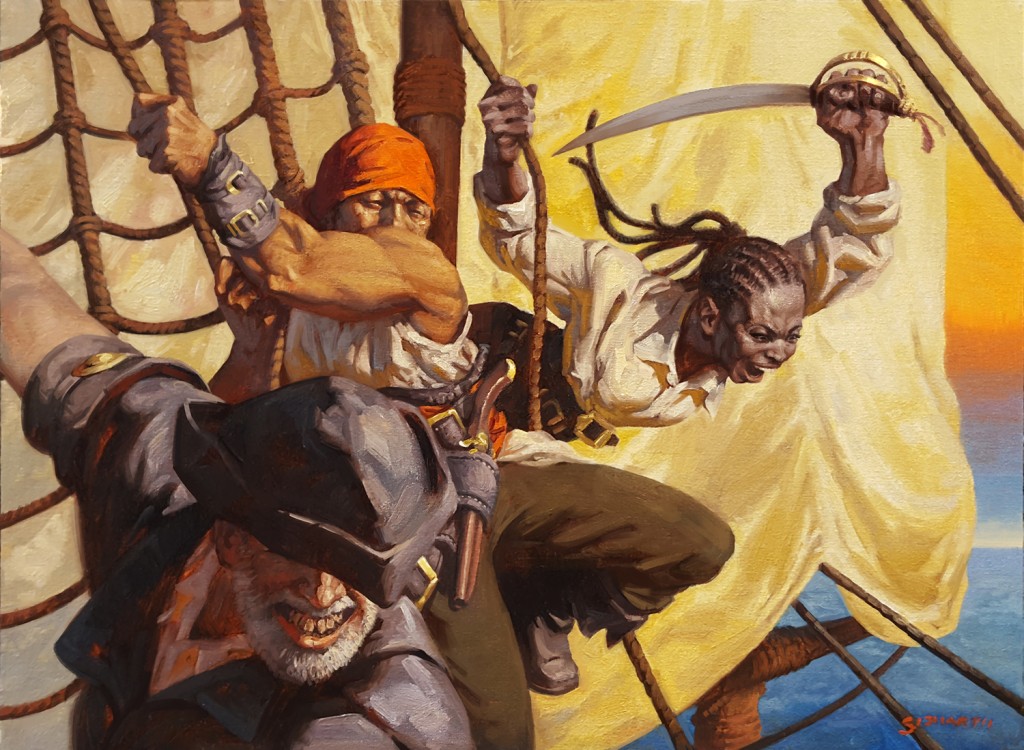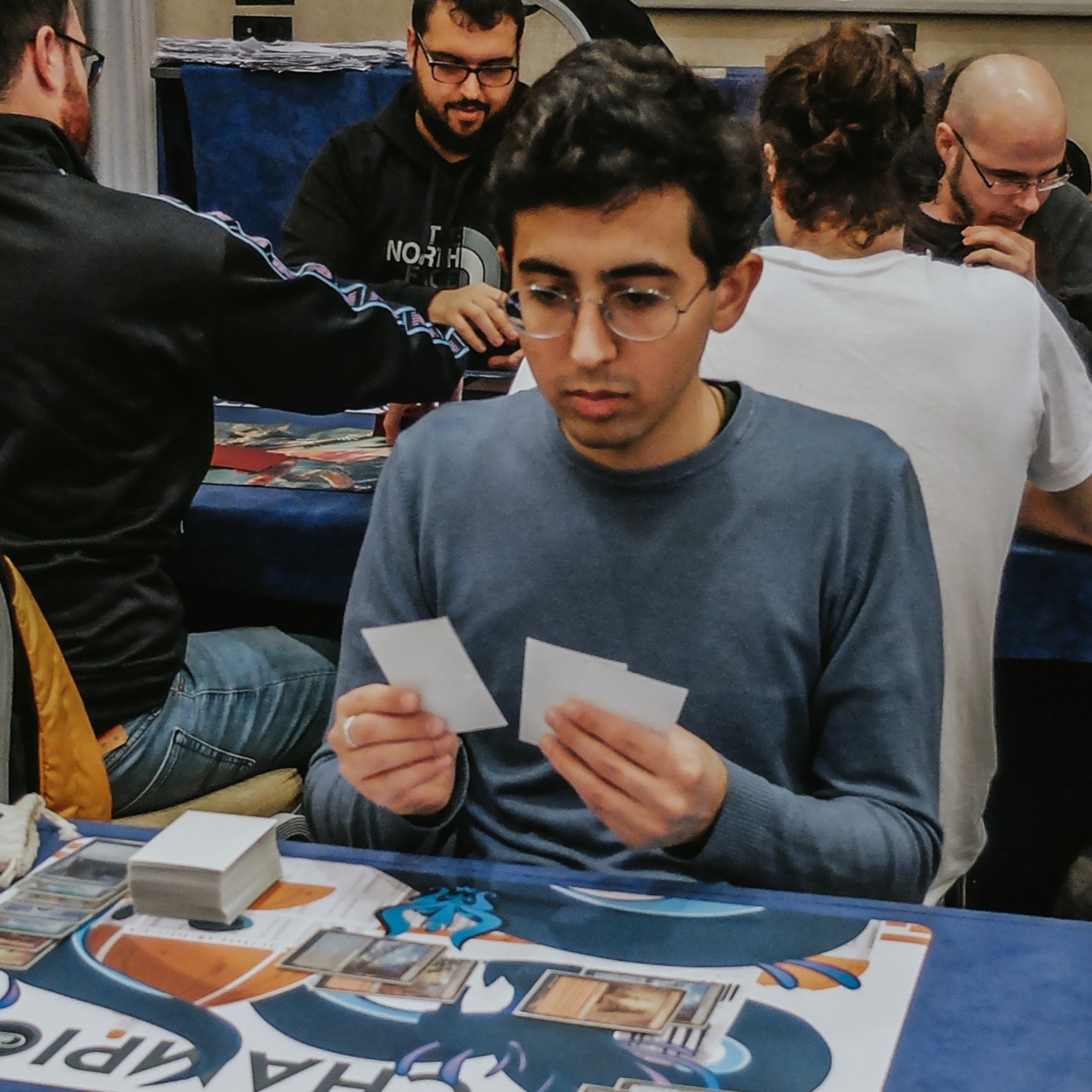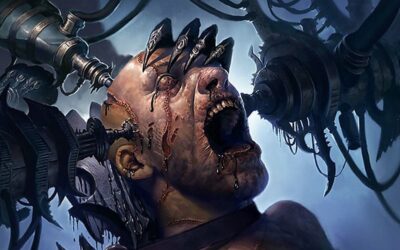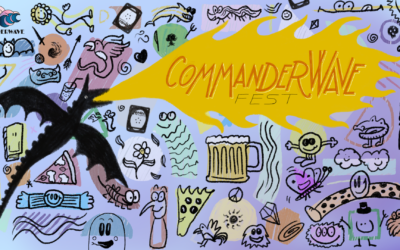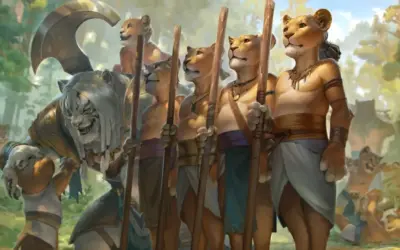Deck choices for a team trios constructed unified tournament can’t follow the usual criteria for individual tournaments because of the format-defining restriction: two players of the same team can’t run the same card in their 75.
Choosing the best team formation is of the utmost importance in this kind of tournament because winning a team match requires winning at least two out of three individual matches, each of them requiring winning at least two out of three games. This structure amplifies any difference in win rates and reduces variance. The best team has a much better chance of winning a team trios tournament than the best player has of winning an individual tournament of the same size.
At the same time, this important choice might feel daunting because of the many options available. Let’s see if I can help you shed some light on it.
In the second section of this article, I will also show the recent team trios meta and highlight how it differs from the normal Pauper meta.
.
The Algorithm
Choosing the right combination of decks for your team requires you to sift through hundreds or even thousands of possible combinations. This task is impossible for a human, but very simple for a machine. Since I don’t know much about coding, I described the algorithm to ChatGPT and asked it to write the Python program for me. You can find it here and download it.
To use the program, you will have to edit the script with your conditions, and then run it. If you don’t know how to edit and run a script, you’ll have to google it. But don’t worry, it’s pretty easy. In the file, I’ve left many traces of the last time I used the program so that you can use them as examples (the last time I used it was at the Colosseum team Trios, which my team won).
Let’s go through the conditions that you have to specify:
- A “tier list” of decks. Use numbers on a fixed scale to specify the power level of every deck that you’re taking into consideration. I have two suggestions of possible ways you can determine power levels.
- The mentally sane way: let every member of the team vote for a power level, then use the average of the three votes.
- The deranged way: make a table of matchups for the whole format, then for each deck do a weighted average of its matchup win rates based on the metagame that you’re expecting to face. To have additional info on what you might face, you can go to the second section of this article.
- A list of three players.
- For each player, the list of decks that they can play with confidence.
- What decks can’t appear in the same combination. For example, both Mono U Terror and Jeskai Ephem need Counterspell. You will just need to add one of them to the list of decks that can’t appear with the other one. In the file that you’ve downloaded, I’ve already written all the restrictions that I can think of, but you can edit them if you play with different builds, if a new deck pops up, or for whatever reason.
- Groups of decks of which at most two can appear in your combinations. Elemental blasts are the main concern of this section. E.g. you can have two decks with 4 Hydroblasts, but not three.
Upon execution, the program will produce a txt file in the same location where it’s stored. You will find the output there. Looking at the output on your terminal instead of reading the txt is risky because with too many combinations the top lines could be omitted.
The output lists all legal combinations in order of power level. You will find the strongest ones at the top.
Output example:
.
Team Trios Data
I aggregated some data from the three biggest team trios events that were played in Italy during the Autumn Paupergeddon season: Pauperstellar, Radioatog, and Colosseum Team Trios. Let’s have a look at their characteristics: it might help you understand which decks are stronger in a team trios environment.
This is the metagame that you get by putting the three events together:
If you’re wondering how this is different from a normal paper metagame, here’s a comparison with the Autumn Paupergeddon meta:
I believe that a better way to visualize what kinds of decks you’re going to have to be prepared for at a team event is to group them by archetype:
In case you aren’t familiar with the mtg slang “voltron”, it stands for a deck that aims to kill you with a big creature.
As much as green might seem the most neglected color, it’s actually much more present in team trios than in regular tournaments. The standard team trios formation tends to be something like this: a Counterspell deck, a Galvanic Blast deck, and a jolly deck. The jolly slot is what fuels the big numbers of linear decks in team trios, green decks included.
But if you’re starting to think that the team trios metagame is solved and everybody brings the formation I just mentioned, you’re in for a surprise, just like I was. Neither at Pauperstellar nor at Radioatog two teams were playing the same decks (CTT didn’t provide us with this kind of data). I find this unbelievable. Sure, the number of combinations you can choose at a team event is much higher than the number of decks you can choose for an individual tournament. Nonetheless, I feel like the team trios format is underexplored, and there should be some more uniformity in deck choices. Hopefully, this article is a step in the right direction.
Although no tournament had two teams with the same combination, two combinations were present both at Pauperstellar and Radioatog:
- UB Terror, Boros Synth, Ponza
- UB Terror, Kuldotha, UW Glitter
Also, I know about one combination that was present at Colosseum Team Trios: mine, i.e. Cawgate, Kuldotha, BG Gardens. This combination was also present at Radioatog, where it also made it to the finals, although it didn’t win Radioatog.


